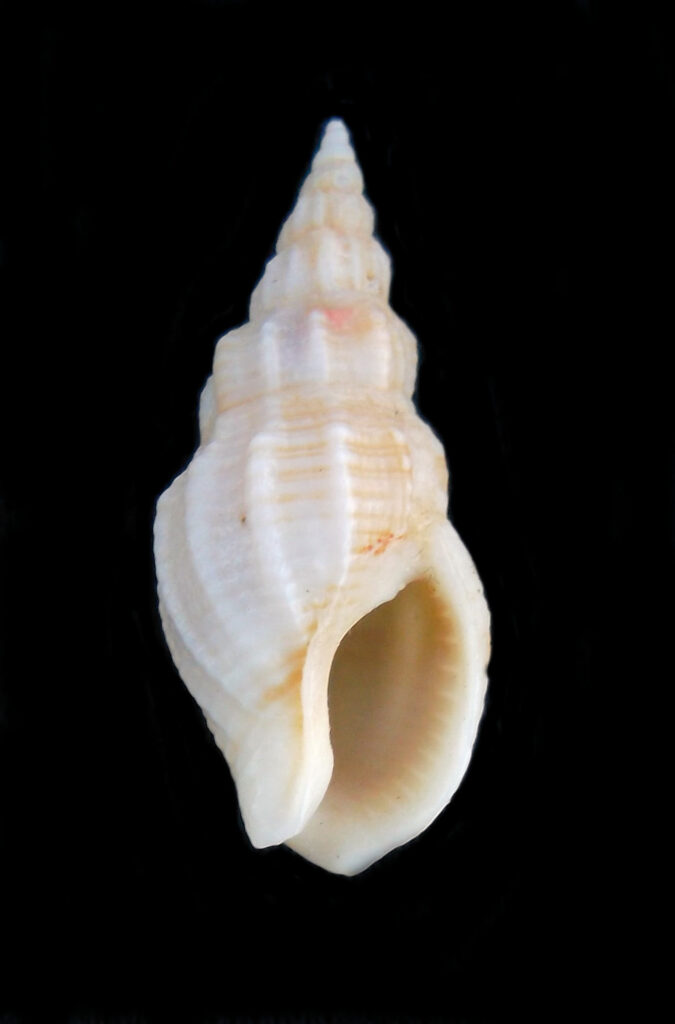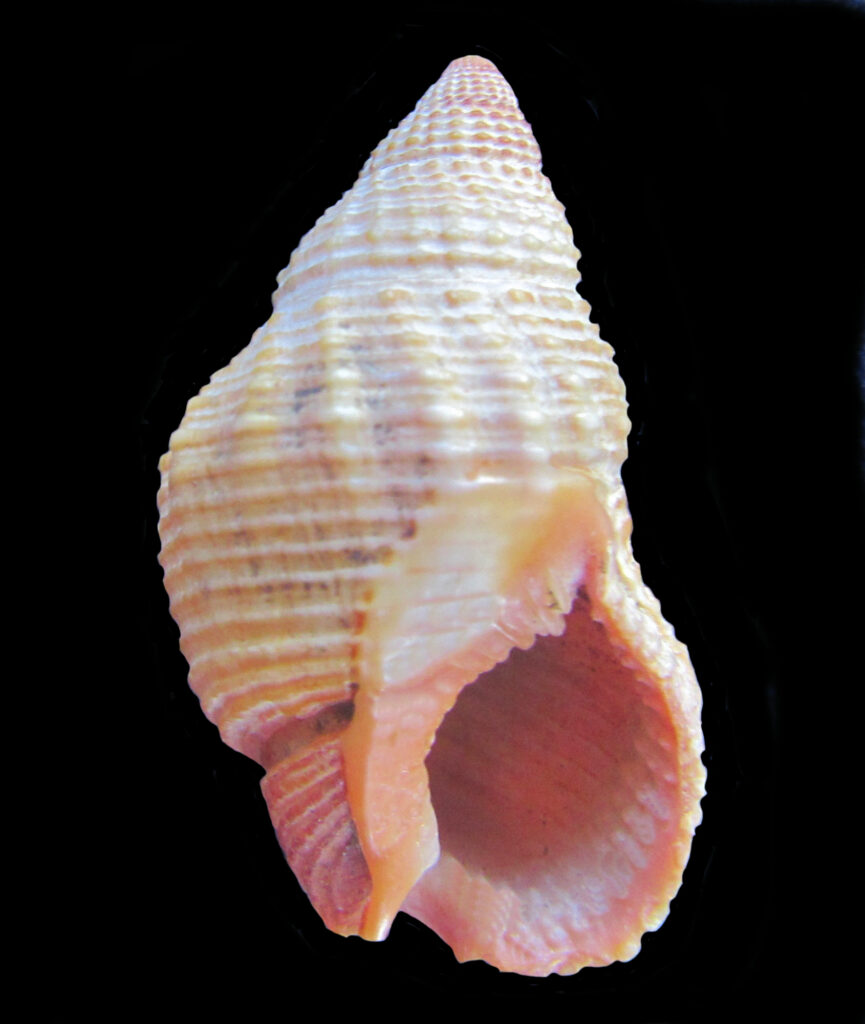The Mud Shells of the Nassariidae Family is a large family that are also known as Basket Shells and Dog Whelks. They are small to medium sized of strongly built shells that have relatively large body whorls and high spires with small siphon canals and oval apertures and small siphon canals. The inner and outer lips of the aperture are often marked with a series of very small ridges. The inner lip often forms a large, smooth, shiny surface (callus). They have a small operculum relative to the size of the shell. The exterior of their shells is often sculpted with cancellate (crisscrossing) ridges affording a basket-weave appearance is what gives them the common name Basket Shells. Most tend to have subdued coloration.
Nassa Mud Snails are normally found in shall water environment within mud and sand substrate but some reside in deep water at depths up to 1,525 m (5,000 feet). Most are scavengers that form large groups consuming dead fish; others are predators, consuming bivalves and gastropods. Chemoreceptors in their siphons efficiently lead them to carrion. In turn they are preyed upon by shore birds, crabs, fish, sea stars, and predatory mollusks. They are found in tropical and temperate seas, worldwide. There are about six hundred members of the Nassariidae Family of which twenty can be found in the coastal waters of the Baja.

